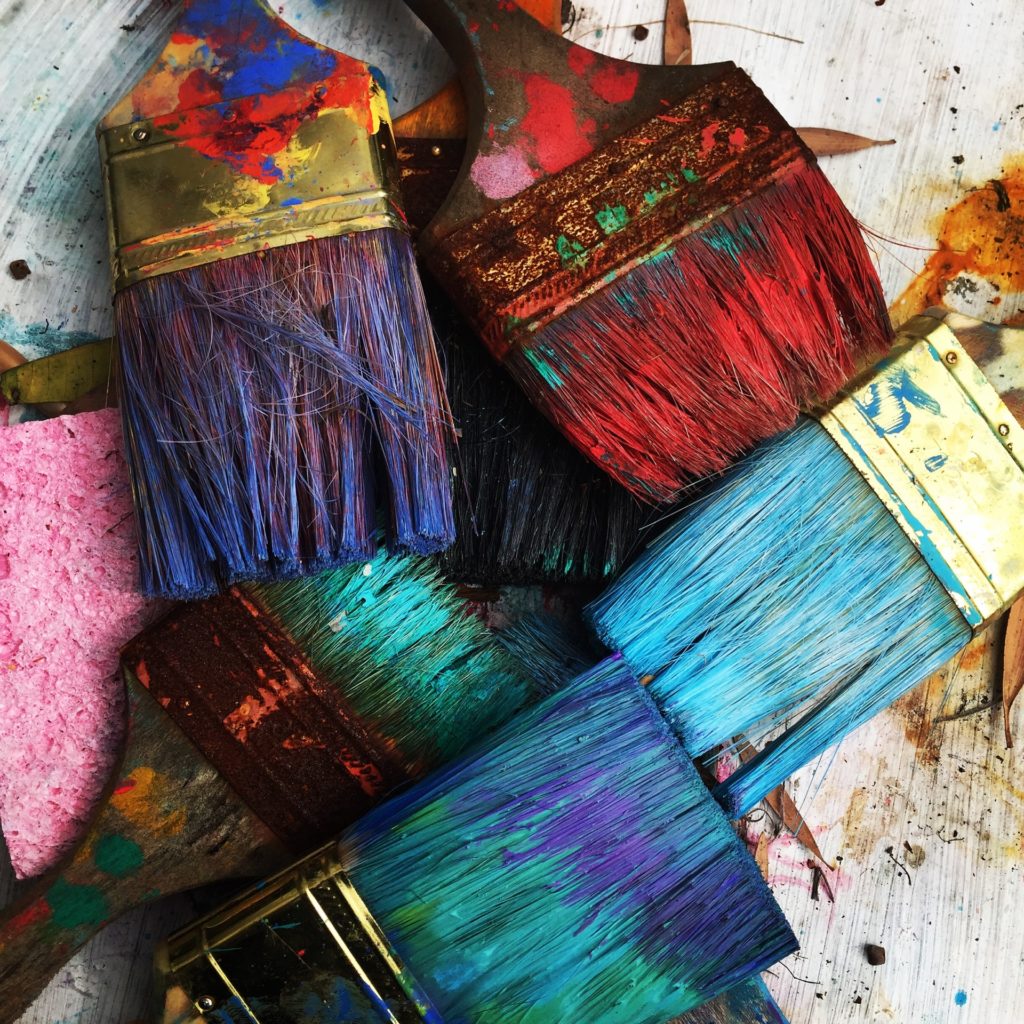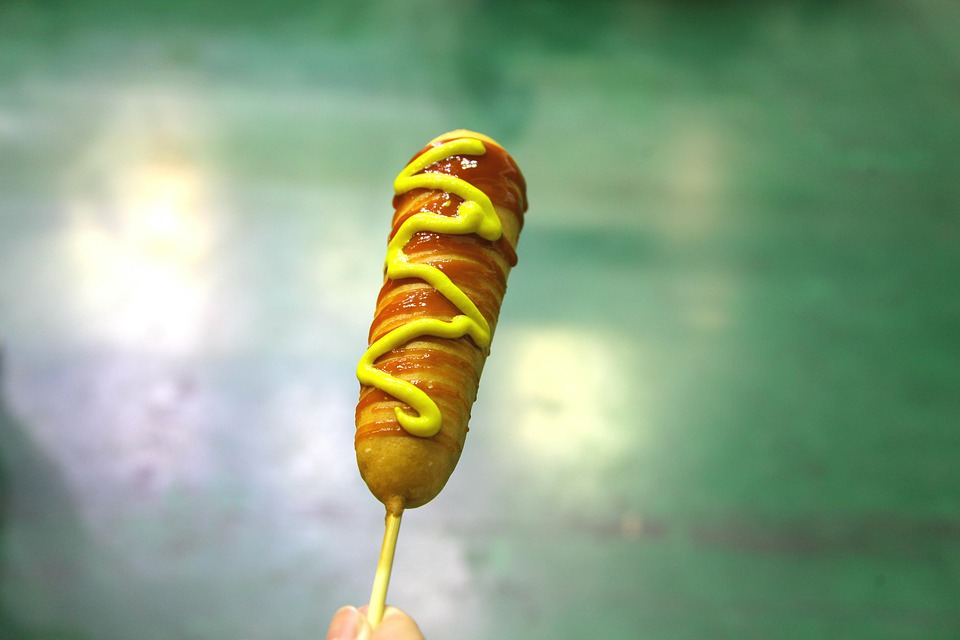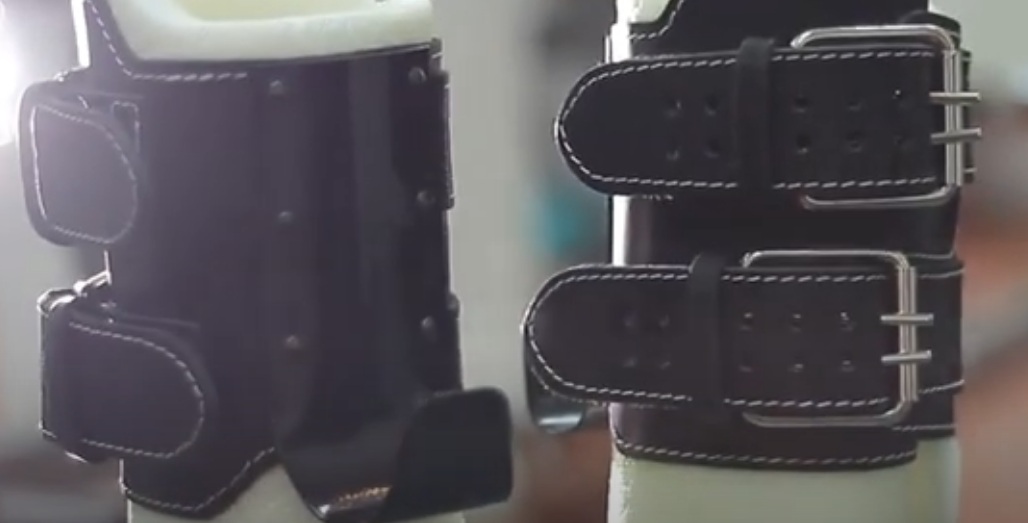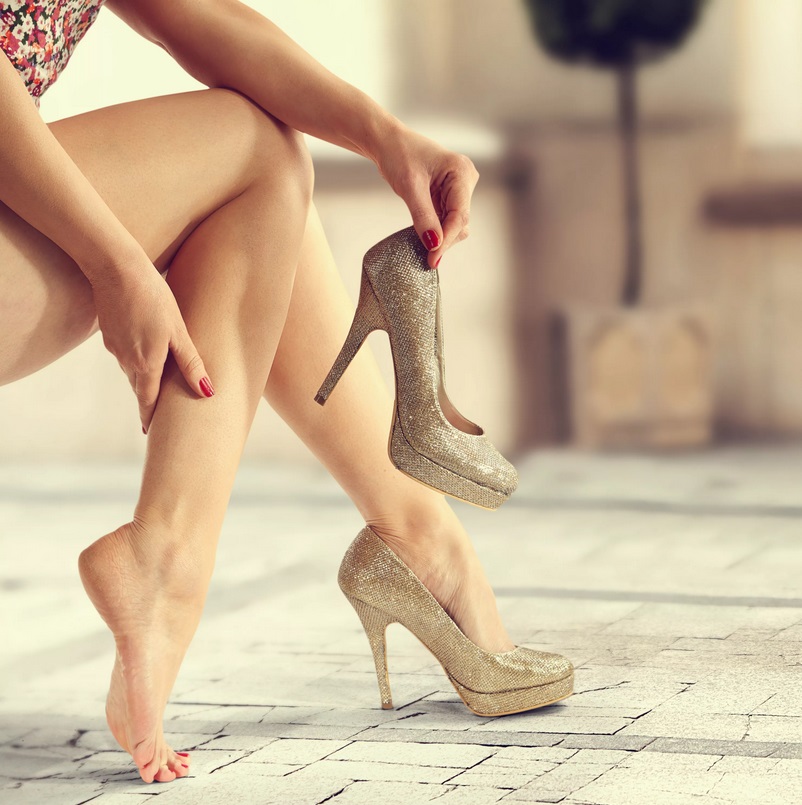Ranking of the best fabric dyes in 2022
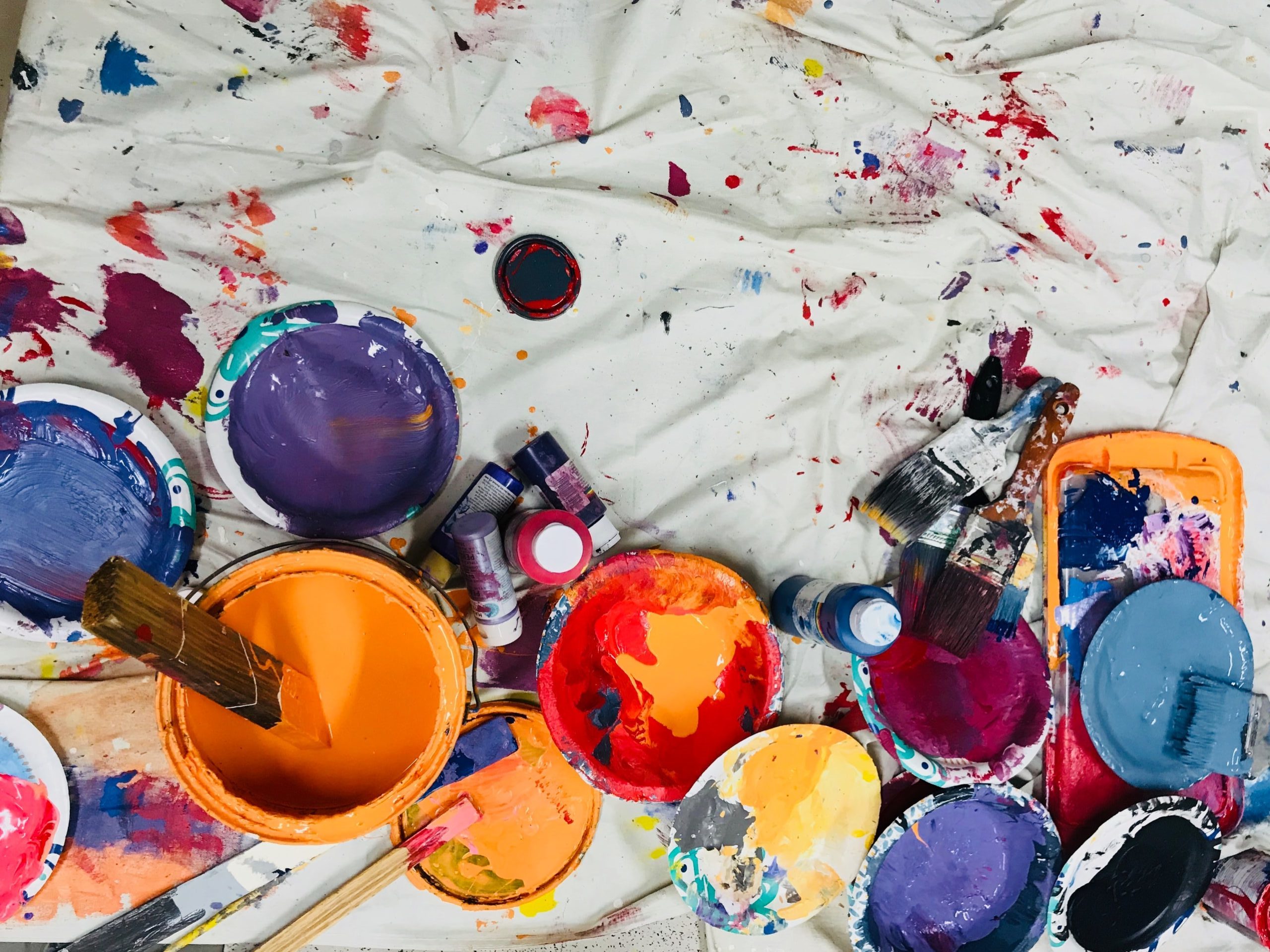
You can make any thing unique with the help of a hand-drawn drawing. And to make it bright and resistant to abrasion, special paints for fabric will help, the best of which we will discuss below.
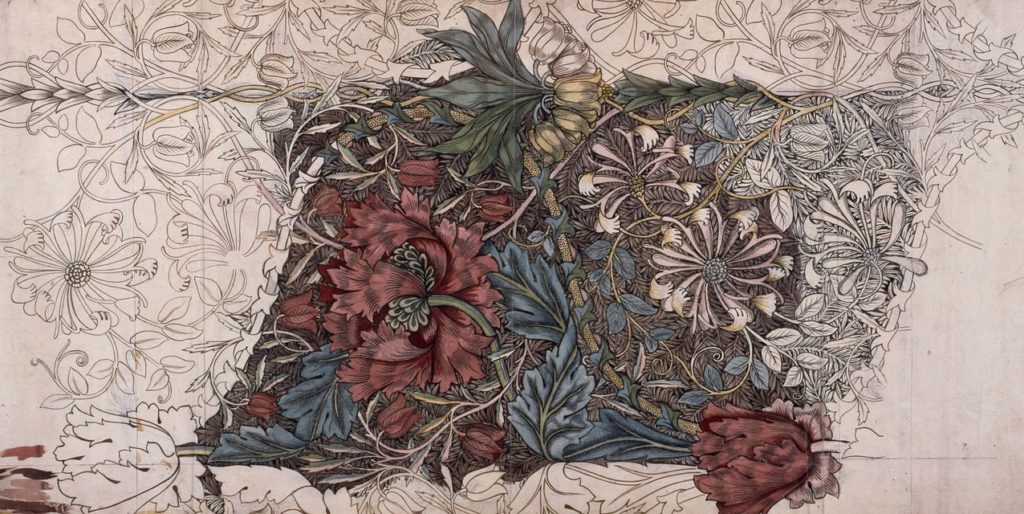
Content
Fabric that can be dyed
Conventionally, any textile can be divided into natural and artificial. Natural materials, which include cotton, linen, silk, lend themselves better to coloring.
This is due to the fact that natural fabrics absorb the dye better, while much less likely to give an undesirable reaction to the chemicals of the coloring compositions. At the same time, the best effect is obtained because such canvases are distinguished by a uniform structure of matter.
Worst of all, coloring lends itself to canvases that are woven from various threads. An example of such combined materials is viscose.
As for synthetics, dyeing such materials is possible, but it is important to consider a number of points:
The ideal option is to paint the product using the services of professionals, since the dyed synthetic fabric will lose color very quickly during manual processing.
If it is decided to paint synthetics manually, then you should pay attention to the type of canvas being processed and the selected paint:
- Bologna fabric requires dyeing in 2 layers;
- For polyester, you should choose acrylic dye;
- Denim structure textiles are dyed with preheated dye.
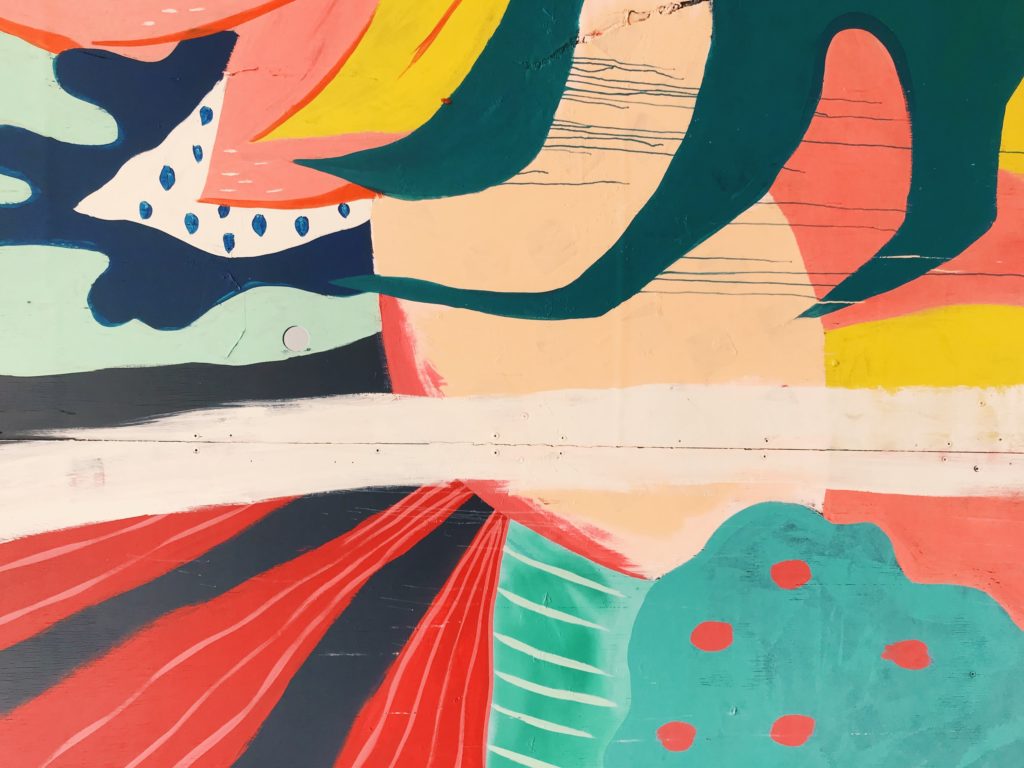
Fabric paint selection criteria
Coloring matter
The first criterion to pay attention to is the main coloring matter. Colors based on acrylic, aniline, stamp, fluorescent and other dyes can be used for fabric.
Acrylic
Undoubtedly, the most popular option for textile work, this is ensured by a number of positive characteristics of such a composition:
- the possibility of dilution with water, which, firstly, reduces the toxicity of the substance almost to nothing, and secondly, reduces consumption, making the product a fairly economical option;
- high drying speed, which saves the master's time;
- allows you to easily mix colors with each other, achieving unique, inimitable shades.
It should be remembered! Textiles dyed with acrylic pigment can be washed with cool water (not higher than 30 degrees).
Aniline
These substances are available in liquid or powder form. By their properties, such substances are similar to their acrylic counterparts:
- Easily soluble in water;
- Ideal for natural fabrics, as well as for mixed ones, but on condition that the proportion of artificial threads does not exceed 60%;
- Allows you to mix colors to obtain different shades;
- Differ in fast drying.
However, rapid drying can only be achieved if the dye has been previously diluted in very hot water (60-95 degrees).
Stamp
The use of paint, which was originally used for office stamps, became in demand for working on fabric, because such a composition, drying out rather quickly, acquired a convex shape. Today, stamp ink for fabric allows you to achieve a different effect, depending on the basis on which the color scheme is created:
- Water-glycerin will allow you to saturate the fabric well;
- Alcohol - dries quickly and becomes extremely resistant to bleach;
- Oil - will provide brightness to the picture, but you must be prepared for prolonged drying.
Stamp inks are among the most environmentally friendly.
However, before deciding to work with a stamp dye, one should remember that it must be pre-diluted with a special solution, which is selected based on the basis of the pigment. And these are certain difficulties in selection and additional costs.
Fluorescent dye
The basis of this composition is plastisol with the addition of a fluorescent plasticizer, which allows the pattern to change its color depending on exposure to ultraviolet radiation. The color of such a pigment can be different: red, light green, pink, yellow, and so on.
When to Use Fluorescent Dye:
- for drawing clubwear, shoes, and other textile accessories;
- design of sportswear for better visibility;
- decorating children's clothing also for better visibility;
- for the design of labels, logos;
- for masquerade and theatrical costumes.
Plastisol in the composition makes the substance viscous, so it is recommended to use it in covering technique in certain areas of the canvas. For continuous staining, such a dye will have to be carefully diluted.
Dye release form
In addition, it is worth paying attention to the shape and texture of the pigment.
It can be a liquid mixture, which is convenient to use for dot painting. This paint is easy to use, as it does not require additional manipulations before starting work. Of the minuses - it is necessary to pay attention to the tightness during storage of the container.
Powder - this paint can be used for various purposes. To start work, the powder will require dilution, as a result of which a mixture of the required consistency can be obtained. Often powder dye is also used for machine coloring.
Spray can - this form is most suitable for painting large-sized canvases, which will save time on the procedure.
Fabric dyes can be purchased as a set or individually.
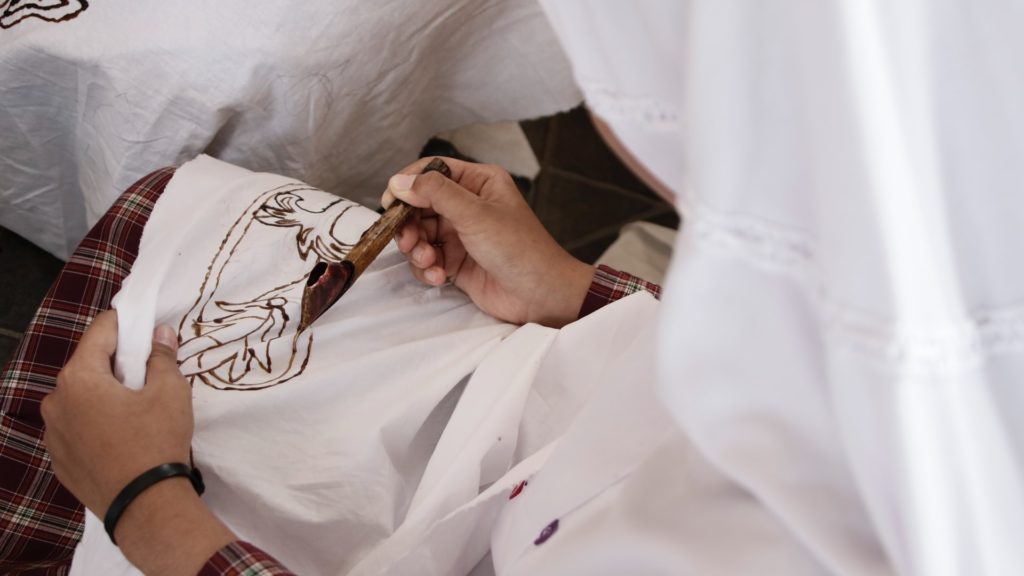
The best fabric paints for 2022
Sets
Neva palette Decola (4141025), 20 ml, 6 colors
The set includes 6 plastic containers with ready-to-use acrylic-based paints. The caps screw on tightly. The excellent quality of the mixture and the impeccable texture make it suitable for professional textile processing.
After drying, the dye demonstrates durability, withstands machine washing.
The cost of the set is from 880 rubles.
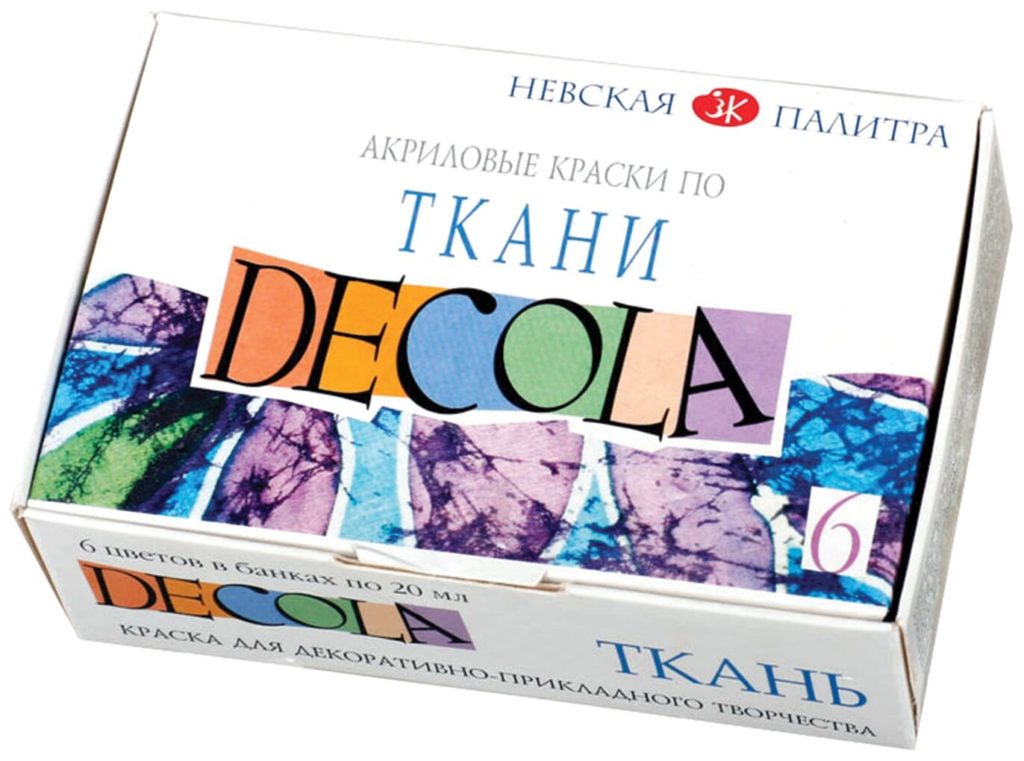
- Good substance density;
- saturated colors;
- easy to lay on the fabric;
- small expense.
- The best effect can be achieved with a two-layer application.
Set for creativity Thai-Dai "Maxi boxing"
This kit is designed for dyeing things using the Tai Dai technique, which involves twisting things in a certain way and then coloring them. The final drawing depends on the twisting method.
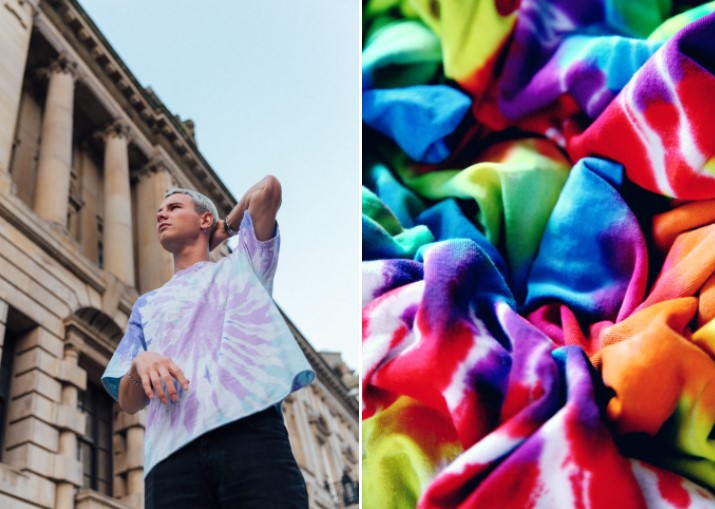
The set from Hit.Toys contains:
- paints, 8 colors (yellow red, dark blue, graphite, purple, blue, pink, dark green);
- activator;
- elastic bands for fixing twisting;
- gloves;
- tablecloth.
The manufacturer also provided detailed dyeing instructions with a selection of various twisting options. It also comes with a handy storage box.
The cost of the set: 1000 rubles.
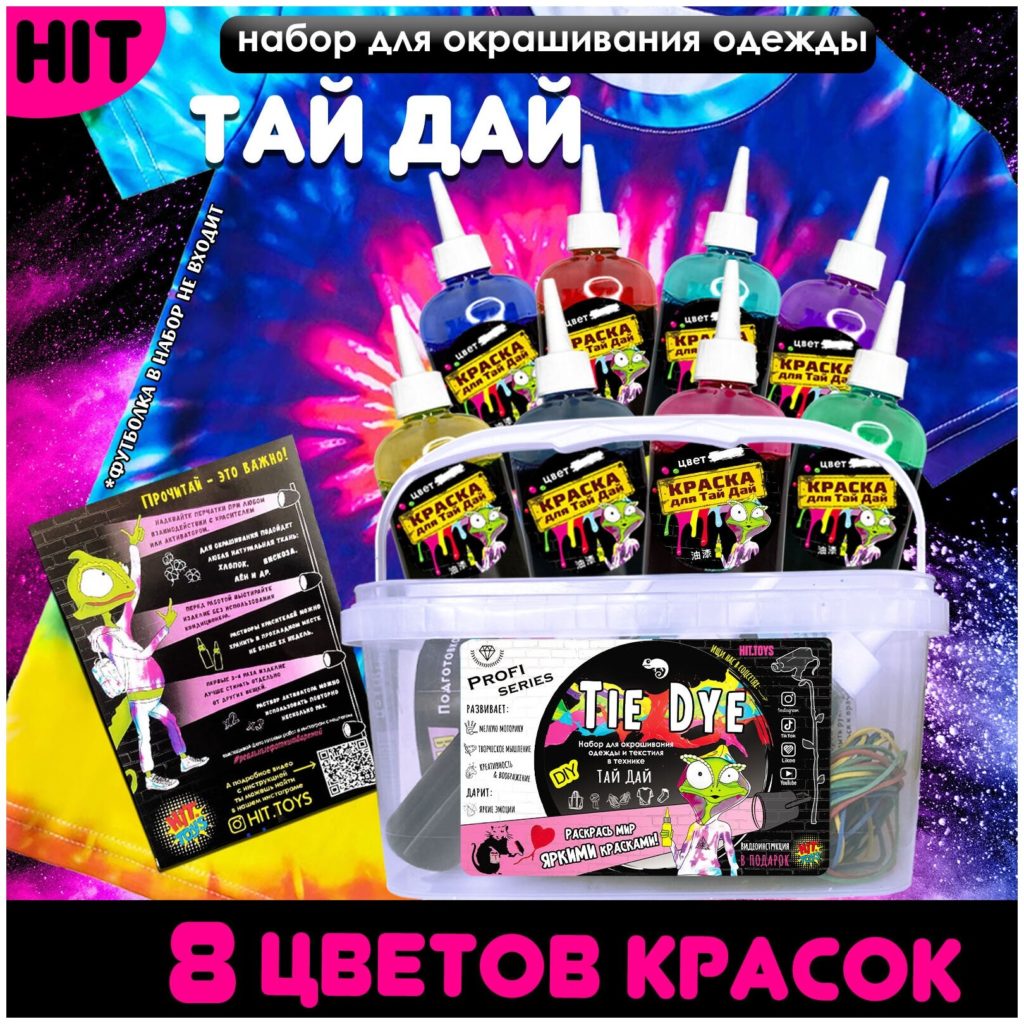
- Everything you need to start coloring is included in the kit;
- Detailed instructions;
- 8 different shades.
- Not marked by users.
I am an artist! ZHK Nevskaya palitra
Acrylic pigments for fabric, set contains 6 colors of 15 ml. every shade. This set is designed for children's creativity, however, users who have already tried the set in practice note the resistance of the resulting pattern to further washing.
Products are designed to work on cotton fabric, complete drying takes a day. The set comes with instructions for use.
Colors: white, yellow, red, green, blue, black.
Set cost: 227 rubles.

- Fastness of colors on the fabric, subject to the time and technology of drying;
- nice price;
- paints are easy to mix to obtain the desired color.
- No.
Aqua-Color set 12 colors, frost-resistant
Pigments from this set fit well on cotton, linen and even synthetic fabric. The coating is dense, resistant to further washing. Designed for people with different skill levels: professionals, amateurs and even children.
Each of the 12 shades of the set is water-based, does not contain phenol, which means it is one of the safest.
Set colors: white, black, purple, blue, pink, orange, yellow, red, emerald, aqua, lilac, apple green
The cost is from 600 rubles.
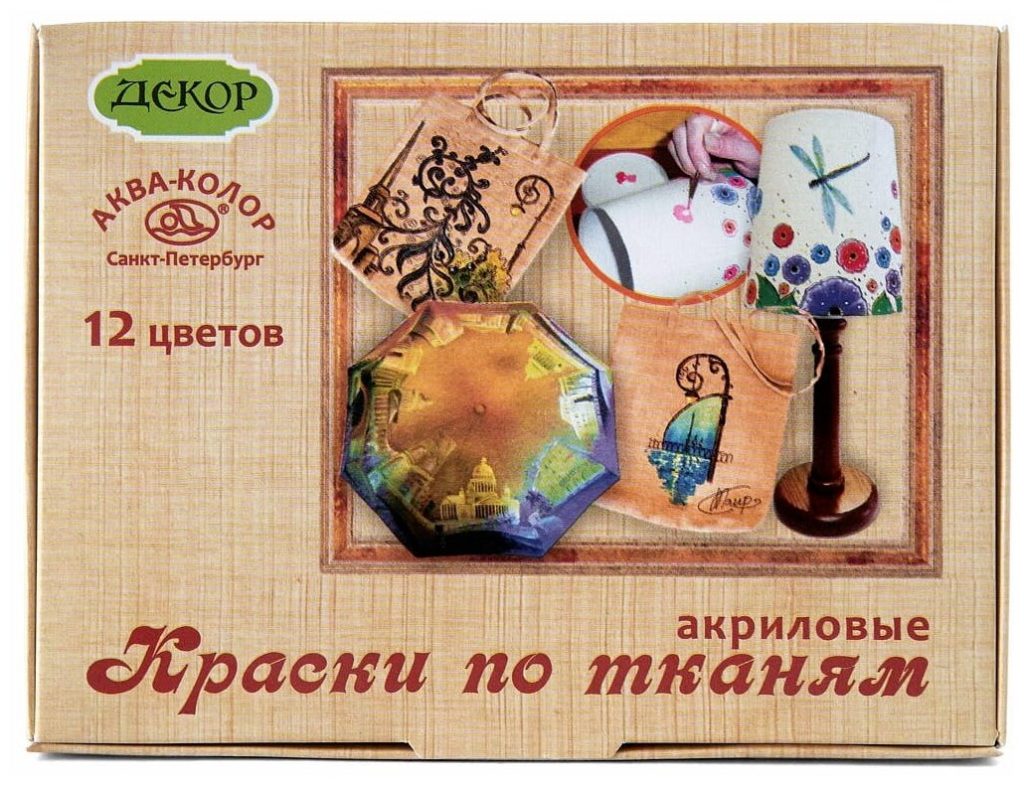
- Water base;
- Safe composition;
- 12 colors that are also easy to mix for additional shades;
- The dyed item is resistant to washing;
- Resistant to low temperatures.
- Not marked.
Decola contours on fabric, metallic
This set contains three shades based on an aqueous acrylic dispersion, packed in tubes with a pointed tip. Such contours are used to create a three-dimensional decor, as well as to prevent mixing of colors when working on silk and cotton fabrics.
The Metallic set contains gold, silver and copper dyes, 18 ml of each color.
The price of contours is from 540 rubles.

- Very beautiful shades;
- Dries quickly;
- Convenient nozzle for application.
- Not marked.
Paints sold individually.
The advantage of this packaging is that you can choose only those colors that you really need. The volume of separately sold paints, as a rule, is larger than those sold in sets.
Paints and contours on fabric Love2art
60 ml of finished pigment will cost from 300 rubles. The consumer is offered a choice of many shades that can be applied by various methods - a synthetic or special stencil brush, sponge, marker. Such a composition can be applied in 1 or two layers. Given that the drying time is 20 minutes, and the use of a hair dryer is allowed for drying, the whole process, even with a two-layer application, will not take too much time.

Advantages:
- Versatility of use;
- Drying speed;
- Choice of colors;
- Variety of application tools.
Flaws:
- To use as a contour will require some skill.
OLKI acrylic for fabric, 100 ml
The choice of the consumer is offered more than 40 shades. 100 ml of pigment, namely, a jar has such a capacity, will cost from 300 rubles.Among the shades there are glossy and matte colors, as well as metallic and mother-of-pearl. The composition is perfectly applied to the fabric, forming a dense layer. Great for decorating textile shoes, including sneakers.
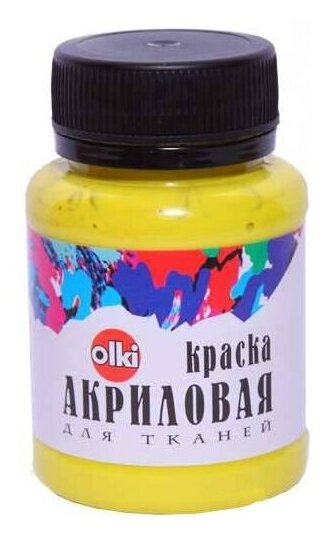
- Large selection of colors;
- Excellent application;
- Dense layer and rich colors;
- Sufficient volume.
- No.
Pebeo with suede effect Setacolor, 45 ml
A series of suede effect pigments from this manufacturer does not include too many shades in the palette, however, each of the available ones is quite functional and additional colors can be obtained by mixing. Available colors include anthracite, antique white, royal blue, pebble grey, red.
Pigments can be used for various types of textiles: cotton, wool, knitted fabric, jersey, velor, jacquard, polyester, mixed materials. Also, even the skin can be painted with a similar composition.
The coating that is obtained upon drying is velvety, voluminous. This effect is achieved even with a single application.
How much does suede effect paint cost? On Yandex Market, goods are offered from 370 rubles per 45 ml jar.

- Versatility, can be dyed with various fabrics;
- Can be used on skin
- Saturated colors;
- Does not require dilution;
- Suede effect after drying.
- No.
For continuous dyeing in the washing machine
Simplicol EXPERT
Textile paint is intended for dyeing fabrics and clothing, suitable for cotton, viscose, wool, silk, linen and mixed materials, provided that the content of synthetic fibers is not more than 50%.
The package contains 150 g of dye, which will allow you to dye 300 g of fabric. If the pigment is applied to a larger amount of canvas, this will affect the intensity of the resulting color.
It is worth noting that the manufacturer immediately indicates that in order to prevent further shedding of the dyed fabric, a proprietary fixative should be used, which increases the cost of the procedure.
The price of Simplicol EXPERT is from 422 rubles.
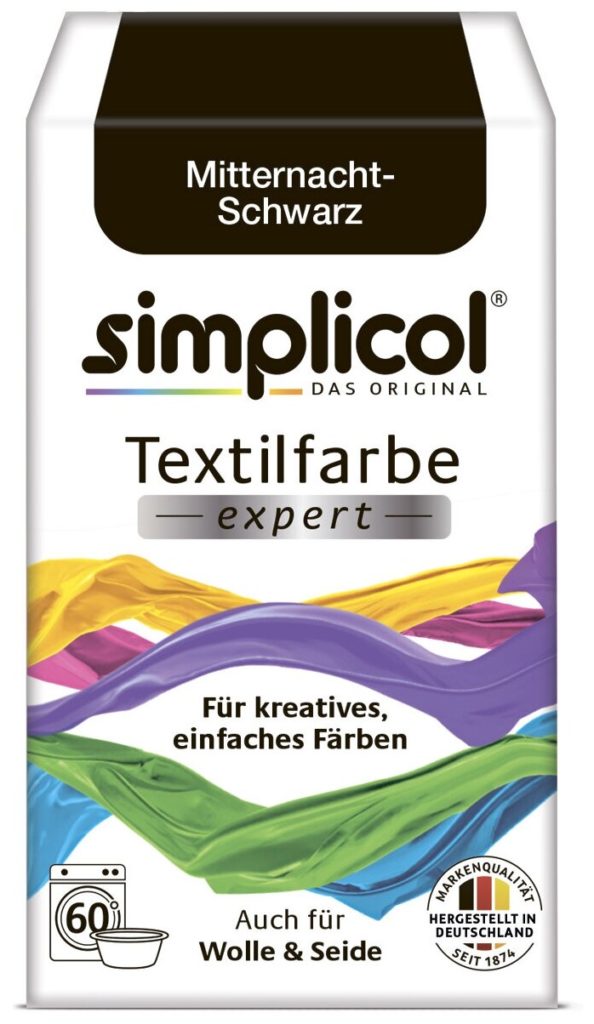
- The color is uniform;
- Ease of use;
- Works great for jeans.
- Colors the rubber seal in the drum of the machine;
- With relative versatility, it cannot be used for cashmere, angora, mohair items.
IDEAL MINI "All in One"
This textile dye provides stable and uniform dyeing of cotton, linen, viscose, silk fabrics. It is also possible to dye materials, the content of synthetic fibers in which does not exceed 50% One package (230 g) will allow dyeing 200-600 g of fabric. The color of the processed canvases is uniform, the seams and other synthetic parts remain in their original color.
Can be used for washing machines, as well as for hand dyeing. The procedure is described in the attached instructions.
The cost of IDEAL MINI is from 560 rubles.

- Ease of use;
- Color fastness with subsequent washings;
- Contains no phosphates
- Made in France.
- Will not dye synthetics and 100% wool.
TextileCare "All in One"
Such a substance is intended for processing cotton fabrics, as well as mixed fabrics, the content of synthetic threads in which does not exceed 50%.Do not use on 100% silk, wool, impregnated materials, suede and leather.
350 g of dye are designed to process 600 g of fabric, if there is more of the latter, the resulting color will be lighter.
The cost of textile paint produced in Poland is 450 rubles.
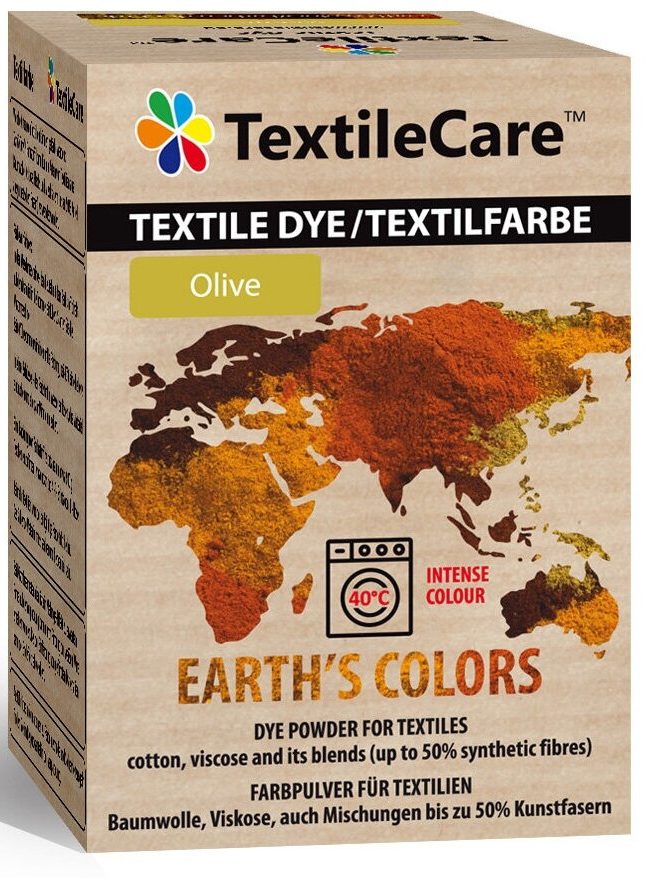
- Choice of colors;
- Suitable for machine and hand dyeing;
- The dye is hypoallergenic.
- It is difficult to call it universal, many fabrics cannot be dyed with it.
Spray paint for fabric
Metallic 150 ml, Marabu Textil Design, gold
Acrylic paint evenly lays down on the processed material, is not afraid of water, deformation (stretching and compression). you can do solid coloring or work with a stencil.
Paint can also be used to create graceful drawings; in this case, the manufacturer recommends creating a preliminary sketch.
The cost of the balloon is from 1280 rubles.

- Dries quickly;
- Excess mixture can be removed with a sponge;
- Lies flat;
- You can work with a stencil.
- Dexterity is required to obtain a uniform layer thickness.
Lilack Fabric Design
Acrylic paint for textiles, which is applied by spraying. It can be used for natural and mixed fabrics, however, in the latter synthetic fiber should be no more than 20%.
The paint dries quickly, is resistant to washing and fading.
Among the available colors are natural shades, as well as metallic, neon and a glow-in-the-dark option.
The cost of a 220 ml bottle is from 600 rubles.
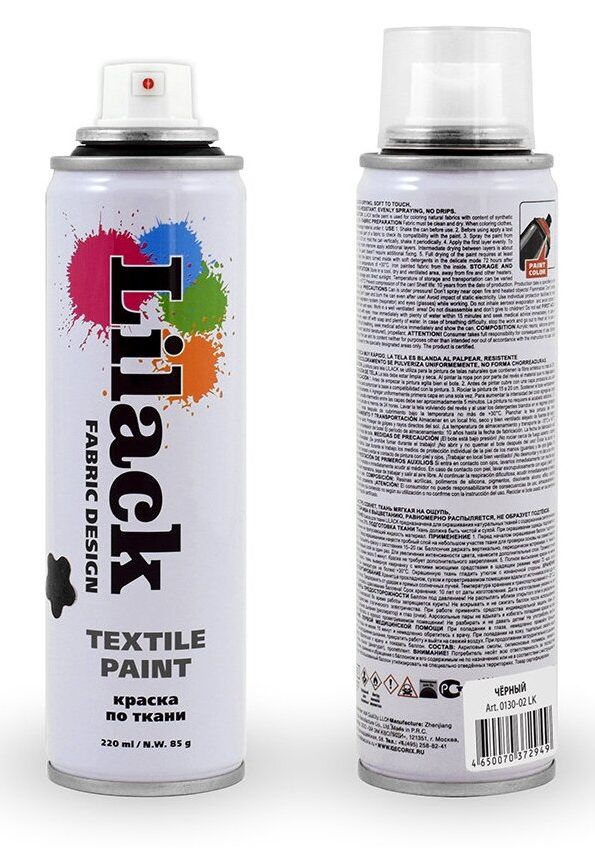
- Choice of shades;
- Self-locking, no heat treatment needed;
- The pattern does not affect the softness of textiles;
- Convenient bottle size.
- Not suitable for fine drawings, unless using a stencil.
CENTROPEN Textile Spray
Spray paint for textiles is characterized by fast drying and a uniform layer. More suitable for continuous dyeing of natural fabrics. The bottle of a comfortable diameter fits easily in the hand and makes it easy to process the material. you can use a stencil to create drawings.
The volume of the bottle is 110 ml, the cost is from 700 rubles.

- Ease of application;
- Choice of colors;
- You can get an even color.
- Defective bottles come across when the paint leaks during use.
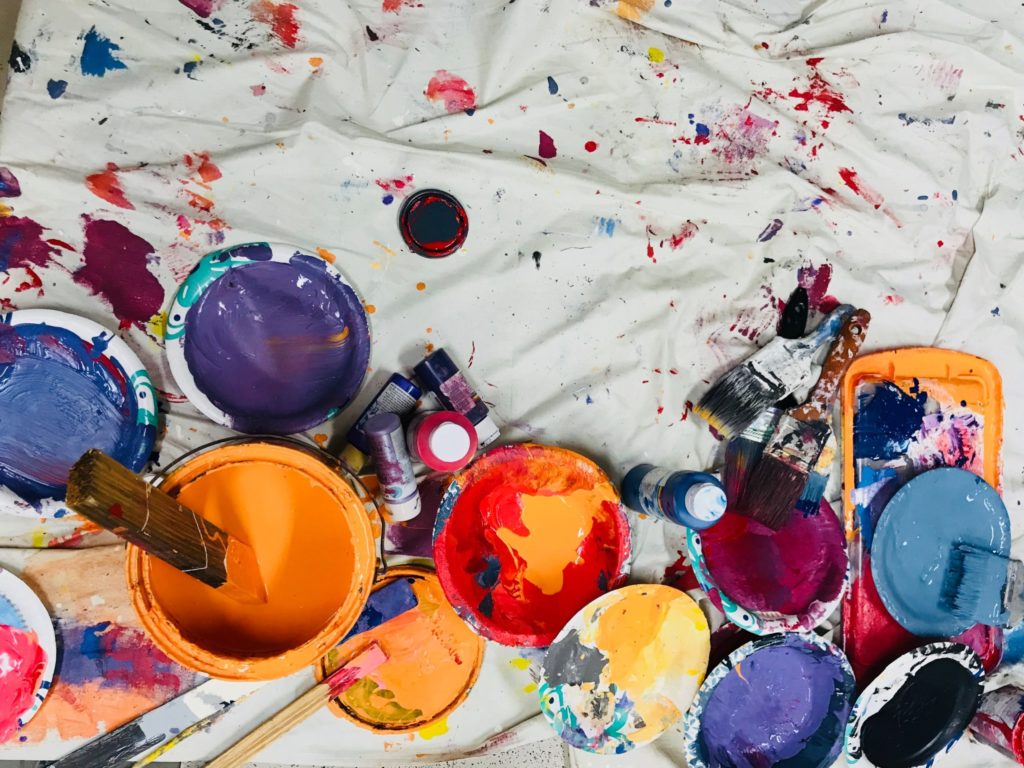
As a conclusion
The modern market of textile paints offers the widest choice of compositions, both in texture and method of dyeing, and in colors. There are both inexpensive kits for beginners and professional dyes. All this allows, having gained certain skills, to create unique things, eliminating the risk of meeting someone in similar clothes or with the same accessory. Get creative with the best fabric paints.
new entries
Categories
Useful
Popular Articles
-

Top ranking of the best and cheapest scooters up to 50cc in 2022
Views: 131649 -

Rating of the best soundproofing materials for an apartment in 2022
Views: 127688 -

Rating of cheap analogues of expensive medicines for flu and colds for 2022
Views: 124516 -

The best men's sneakers in 2022
Views: 124030 -

The Best Complex Vitamins in 2022
Views: 121937 -

Top ranking of the best smartwatches 2022 - price-quality ratio
Views: 114978 -

The best paint for gray hair - top rating 2022
Views: 113393 -

Ranking of the best wood paints for interior work in 2022
Views: 110318 -

Rating of the best spinning reels in 2022
Views: 105327 -

Ranking of the best sex dolls for men for 2022
Views: 104363 -

Ranking of the best action cameras from China in 2022
Views: 102214 -

The most effective calcium preparations for adults and children in 2022
Views: 102010
